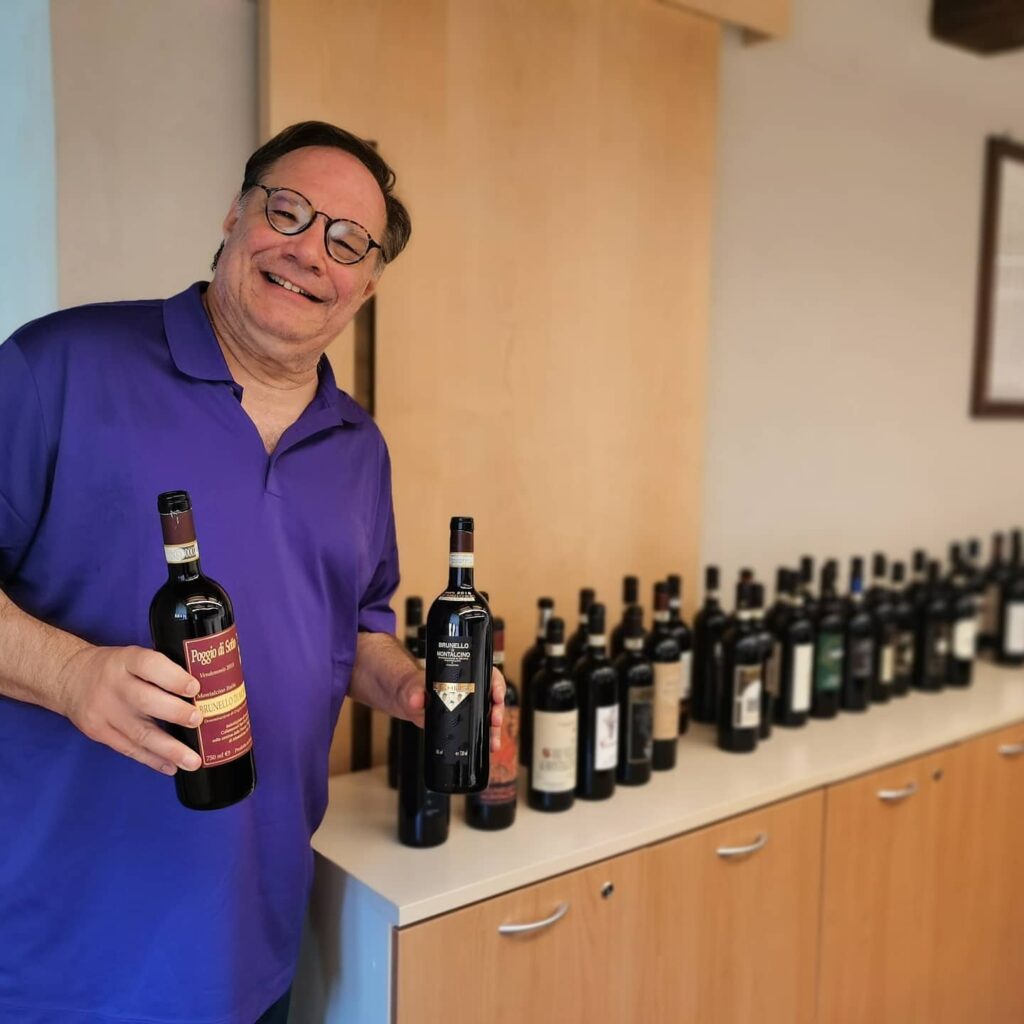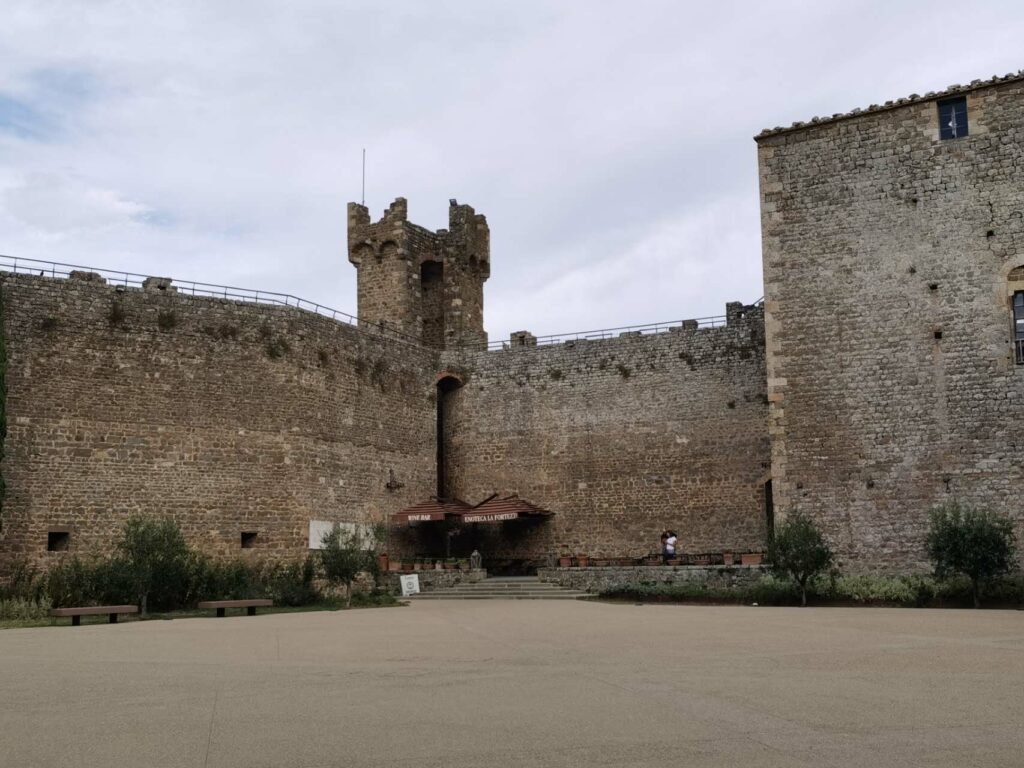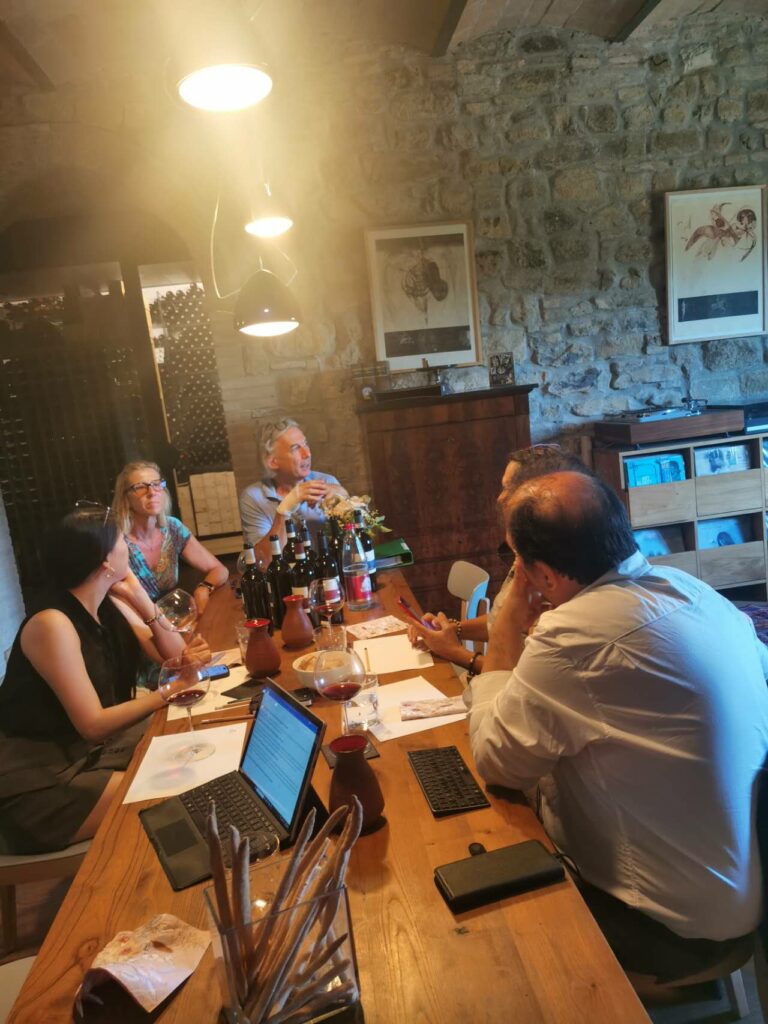Montalcino has been on a roll in recent years, boasting three (actually four) of the best vintages of the last thirty years in a very recent and short time span: the 2013s, 2015s and 2016s (and the upcoming 2019s) gave some truly memorable wines, with, no ifs, ors or buts, the 2015 and 2016 duo arguably ranking as the greatest pair of Brunello vintages ever. Alas, it’s not always wine and roses, and 2017 and 208 are nowhere near the quality level of that exalted trio of growing seasons. However, the much-maligned 2018 vintage of Montalcino’s wines, and the just as challenging (if not even more so) 2017 vintage, yielded overall better wines than I expected. Clearly, these are not two especially memorable vintages, and picking and choosing carefully when buying is necessary in order to select the best wines available. These are two years in which it is ultra-important to have a trusted, really knowledgeable wine merchant to guide you in your wine buying and to follow the advice and scores of only the handful (as in three or four) of truly reputable wine writers, not those who in order to make themselves relevant and gain a minimal amount of visibility “…spray around 97-, 98- and 99- and 100-point scores like confetti at a wedding” to use one of the funniest and most acute phrases coined by long-time staff writer Robert Millman. This for the simple reason that such high-scoring wines did not exist in these vintages, and if you believe otherwise, well, I know of some swampland in Florida that might be of interest to you as an ideal building site for condominiums. Clearly, exceptions did occur with both the 2018 Brunellos and 2017 Brunello Riservas, and there are wines worth hunting down. Best of all, both vintages gave approachable, easy-drinking wines the top examples of which can be enjoyed while your 2013s, 2015s and 2016s mature in your cellar.

The 2018 vintage yielded Brunellos that are not especially powerful, but the best have grace and enough fruit to make them highly enjoyable for early drinking. Those that do not rank with the best are very similar to what might be described as high-quality Rosso di Montalcino wines of memorable vintages (or Brunellini, in Italian), while the worst 2018 Brunellos are fruit-challenged and tough, and best skipped altogether. But it is worth pointing out just how few truly undrinkable wines there were in both vintages, a clear-cut sign and another confirmation of the huge progresses made in winemaking in the Montalcino area in recent years.
One apt, and useful, way by which to think of the Brunellos of 2018 is to view this year as “the vintage of the light or of the brightness”. This is because the maturity of the Sangiovese grapes was brought about mostly by the light rather than the heat. That much being true, its needs to be recognized that, though hard to explain in simple terms and downright impossible to do in a magazine article such as this one (for that, I urge you to read one of my books on native grapes and especially my upcoming huge book on Montalcino and its wines), Sangiovese is not a variety that likes a whole lot of UV irradiation (one of the reasons it has fared poorly in California, for example). But the sunlight was important in 2018 given that heat was at a premium for most of the growing season. From March to June 2018, not just Tuscany but all of central Italy resembled, at least in terms of rainfall, the United Kingdom, more than any section of the Italian boot: daytime average temperatures were below normal annual averages, rainfall was copious and often non-stop, and humidity levels were high, all of which on their own and even more so in combination can amount to disaster in the world of wine. Frankly speaking, and this needs to be discussed a lot more than it is commonly by the world wine press, 2018 was a difficult year especially for those producers working in bio regimens. July and August came to the rescue, making it so that 2018 did not turn out to be a repeat of the forgettable 2014 vintage, with warm days making up in part for the lack of heat of the preceding months (after all, agosto fa il mosto, or “August is what makes the must”, an old and not wrong Italian saying). And though those summertime days were quite hot, happily they came with strong diurnal temperature variations (as much as 15 degrees Celsius) allowing for wines of noteworthy perfume to be made (potentially). Unfortunately, the harvest season represented difficulties, with copious rain falling at the end of September, meaning estates either had to pick early (risking making green wines from physiologically unripe grapes) or waiting the rains out and then making wines from borderline or frankly overripe grapes (which explains in part the very high alcohol levels of many 2018 Brunellos, something that might surprise those with the notion that 2018 was a cold year: it was, and yet it wasn’t). It is true that at at many estates, harvest in 2018 started around September 9 which is more or less the norm for most wineries nowadays, but the problem was the lack of heat in the months of the early growing season and the excessive heat of the summer months. However, grapes were analytically very fresh (ph in the range of 3.4) and those grapes picked at optimal physiologic ripeness gave wines characterized both by freshness and by smooth tannins, so there are wines from 2018 to like. And to like quite a bit. Look for the wines of Argiano, Baricci, Canalicchio di Sopra, Caprili, Col d’Orcia, Fuligni, Il Poggione, La Torre, Lisini, Pian dell’Orino, Poggio di Sotto, Ridolfi, Sesta di Sopra, among many others, to find Brunello bliss in 2018.

By contrast, the 2017 vintage was marked bye exceptionally high temperatures and drought, with most wines being approachable early and rather soft but all too often marred by gritty tannins and overripe fruit aromas and flavours. It is not a year that deserves anywhere near the four out of five star rating it was awarded, even though it is true that many estates handled the heat brilliantly, but the effects of Mother Nature cannot be completely avoided in such weather-challenged years even with the best viticulture and winemaking possible. I personally was surprised to see how many Riserva wines were in fact made in 2017, though I like to believe this is, once again, more a demonstration of the great improvement in local vineyard and cellar management allowing such wines to be made, rather than an attempt to greedily cash in on the value of the “riserva” monicker (and the higher prices it helps fetch).
The amazing strength of, and the place that is, Montalcino
Montalcino is an amazing successful wine story Italy can be proud of. There are 2.100 hectares from where Brunello can be made, and while that number is too large, it is also true that many world-class wines are made in the denomination each year. The success of the area is such that the business volume hovers close to 250 million Euros/year, with growths of +21.5% in value e del +6% in volume in recent years. Add that Montalcino is one of only three places in the world where truly world-class and the best Sangiovese wines can be made, and that a recent survey showed that two out of three Italian consumers are aware of the Montalcino denomination and view it as a source of Italy’s important red wines, and you realize why producers here have reason to smile.
Last but not least, even though it maybe not quite up to the level of a Beaune or a Montepulciano, Montalcino is one of the prettier wine towns in Italy and has far more to offer to wine lovers and visitors than the sorry collection of post-war box-like cheap and downright ugly building constructions of many other even very famous Italian wine communes (we all know very well what these are) and the never-ending litany of wine shops such places offer (and little or nothing else). A walk through Montalcino is always enjoyable and relaxing, and one I urge you to take some time off to partake in next time you visit for wine tasting duties.

The wines in this tasting report
All the wines in this report were tasted this past July and August directly in Montalcino thanks to the Consorzio Vini Montalcino that did a superb job in sourcing the samples (a big thank-you from me to the whole Consorzio staff, in particular director Andrea Machetti whom I have had the pleasure of knowing for more than 20 years, and his right-hand coordinator, Carlotta Salvini and her colleague Erica, all of whom did a spectacular job as always). It is a star consorzio and congratulations to all for a job well done.
Many other wines were tasted thanks to my many direct visits at the wineries where I sampled wines directly on site in both cellar and tasting room. As usual, my travel to Montalcino, lodging and meals, were paid for directly by me and as usual, I neither asked nor received any such financial support of any kind by which to write this article. That is, as always, your guarantee of my and the TerroirSense Wine Review’s independence (not in words only, but in fact).
The second and final part of this article (Part 2) will be out next Friday August 25.

 中文
中文




Ian – I’m heading to Montalcino early December ’23 with my wife. We hope to get to experience some of the ’19s.
But do tell us more, you have a new book coming? When?!
“my upcoming huge book on Montalcino and its wines”
Thanks for asking, it’ll be a while yet, first out next year will be my new mega-tome on Barbaresco and a handbook on Italy’s terroirs that will pair well with the other handbook, “The Grapes and Wines of Italy: The Definitive Compendium Region by Region”, which are ideal study guides rather than huge reference books like Native wine Grapes of Italy and Barolo Terroir.
Thanks for asking!
Ciao Robert,
my apoolgies for the tardiness of this reply but I ahd in fact answered already days ago, though for some reason the reply did not register. Some technical glitch we will have to work on and get fixed, for this cannot happen, ever. So thank-you for your patience, and again, our apologies.
To answer your question, yes i have been working on a book on Montalcino for two years now, but sifting through and compiling allt he relevant info on that terriotry and its wiens will take me another two eyars at elast. All my wine books usually entail about twenty+ years of research and inetrviews and about four to five years of writing, so it’s unfortunately a evry long haul. The new Brunello book will look something like my most recent Barolo Terroir, co-written with my good friend and wine writing colleague Michele Long. But just so you know, before the Brunello book comes out, it will be the turn of two others: “Barbaresco Terroir”, a follow-up to “Barolo Terroir” that will be out in the fall of 2024; preceeded by, out some time in the spring of 2024, a large handbook/study manual devoted to Italy’s wine terroirs and denominations, in the same style and a follow-up to our previous “The Grapes and Wines of Italy: The Definitive Compendium Region by Region”.
I hope that helps, thanks for your query, look forward to meeting in person some day!
Ian